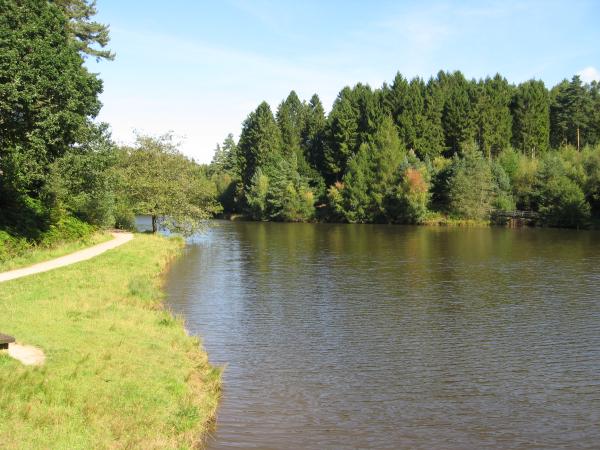|
|
|
For the second month running we have a picture of a lake - this time Mallards Pike in the Forest of Dean. Mallards Pike also had a railway, but this unfortunately closed in 1872 at the tender age of 4 years, a century before the lake was created. Nowadays the alignment is blocked by the car park's toilet block. Once the railway had been removed from the scene, the Blackpool Brook was left to chuckle quietly down the valley on its own until the Forestry Commission decided that a proper Forest needs lakes. Unfortunately the Forest of Dean is completely devoid of natural lakes, although some large bodies of water had been created at Cannop, Lightmoor and Soudley by heavy industries to ensure a consistent water supply. These large bodies of water, called "ponds", were now augmented by slightly smaller "lakes" at Speech House and Mallards Pike, both on the route of the Blackpool Brook. Subsequently the brook was crowned with the largest of the Forest's lakes when Woorgreens open-cast coal mine closed and was allowed to fill with water to create Woorgreens Lake. Of all the lakes and ponds, Cannop and Mallards Pike are probably the most popular with visitors; both have delightful scenery and convenient, well-promoted car parks on the Forest cycle trail. Speech House has received more international attention from its uncredited (and therefore unrecognised) appearences in BBC One's show Merlin. The others hide discretely in the trees and are known only to explorers, devoted map-readers and local fishermen (with the exception of Woorgreens, which it is quite easy to walk right round without meeting anyone). The lake's name is apparently a nicely-modified recognition of Mr Maller's Turnpike road, which runs about quarter of a mile south of the lake on its way from Blakeney to Parkend. The turnpike is nowadays busy with tourists and locals, who can drive along it without paying the extra toll that was traditionally imposed on turnpike users. In its day Mr Maller was no doubt suitably dispirited by all the people constantly campaigning for his road to be replaced by a railway, but will have taken much heart as important-sounding schemes like the Moseley Green and Tilting Mill Pool Tramway fell by the wayside through the years. Now most visitors drive in along his turnpike and wander around the lake remarking on the peace and quiet as the path meanders through the trees and provides a view of a second, higher lake that is intended as a nature reserve. Little do they know of the mighty colliery that once sat on the grass opposite the entrance to the road to the lake. |
